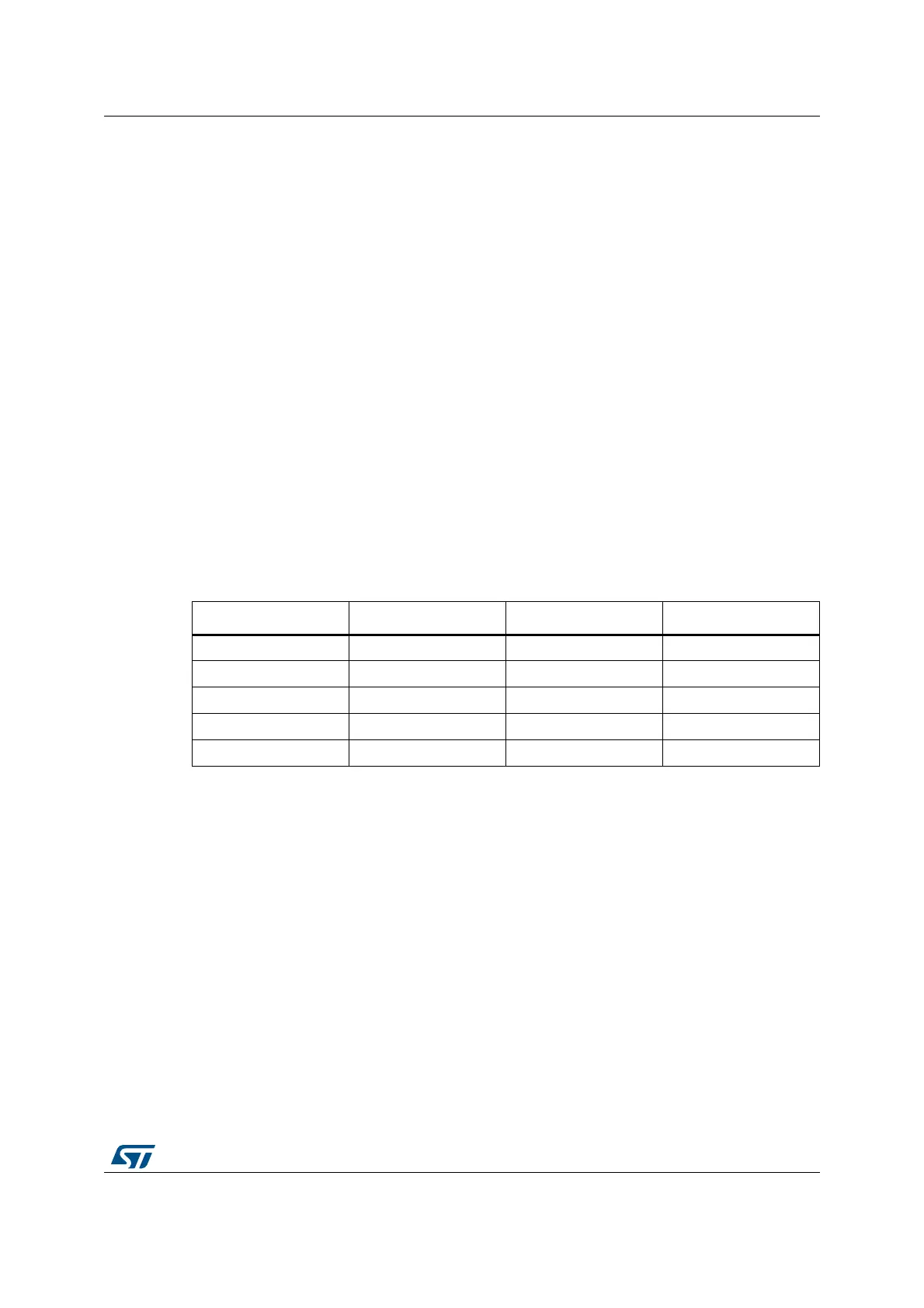PM0214 Rev 10 205/262
PM0214 Core peripherals
261
SIZE field values
The SIZE field defines the size of the MPU memory region specified by the MPU_RNR
regsiter as follows:
(Region size in bytes) = 2
(SIZE+1)
The smallest permitted region size is 32B, corresponding to a SIZE value of 4. Table 43
gives example SIZE values, with the corresponding region size and value of N in the
MPU_RBAR.
Bits 15:8 SRD: Subregion disable bits.
For each bit in this field:
0: corresponding sub-region is enabled
1: corresponding sub-region is disabled
See Subregions on page 198 for more information.
Region sizes of 128 bytes and less do not support subregions. When writing the attributes for
such a region, write the SRD field as 0x00.
Bits 7:6 Reserved, forced by hardware to 0.
Bits 5:1 SIZE: Size of the MPU protection region.
The minimum permitted value is 3 (b00010), see SIZE field values for more information.
Bit 0 ENABLE: Region enable bit.
Table 43. Example SIZE field values
SIZE value Region size Value of N
(1)
1. In the MPU_RBAR register see Section 4.2.8 on page 203
Note
b00100 (4) 32B 5 Minimum permitted size
b01001 (9) 1KB 10 -
b10011 (19) 1MB 20 -
b11101 (29) 1GB 30 -
b11111 (31) 4GB b01100 Maximum possible size

